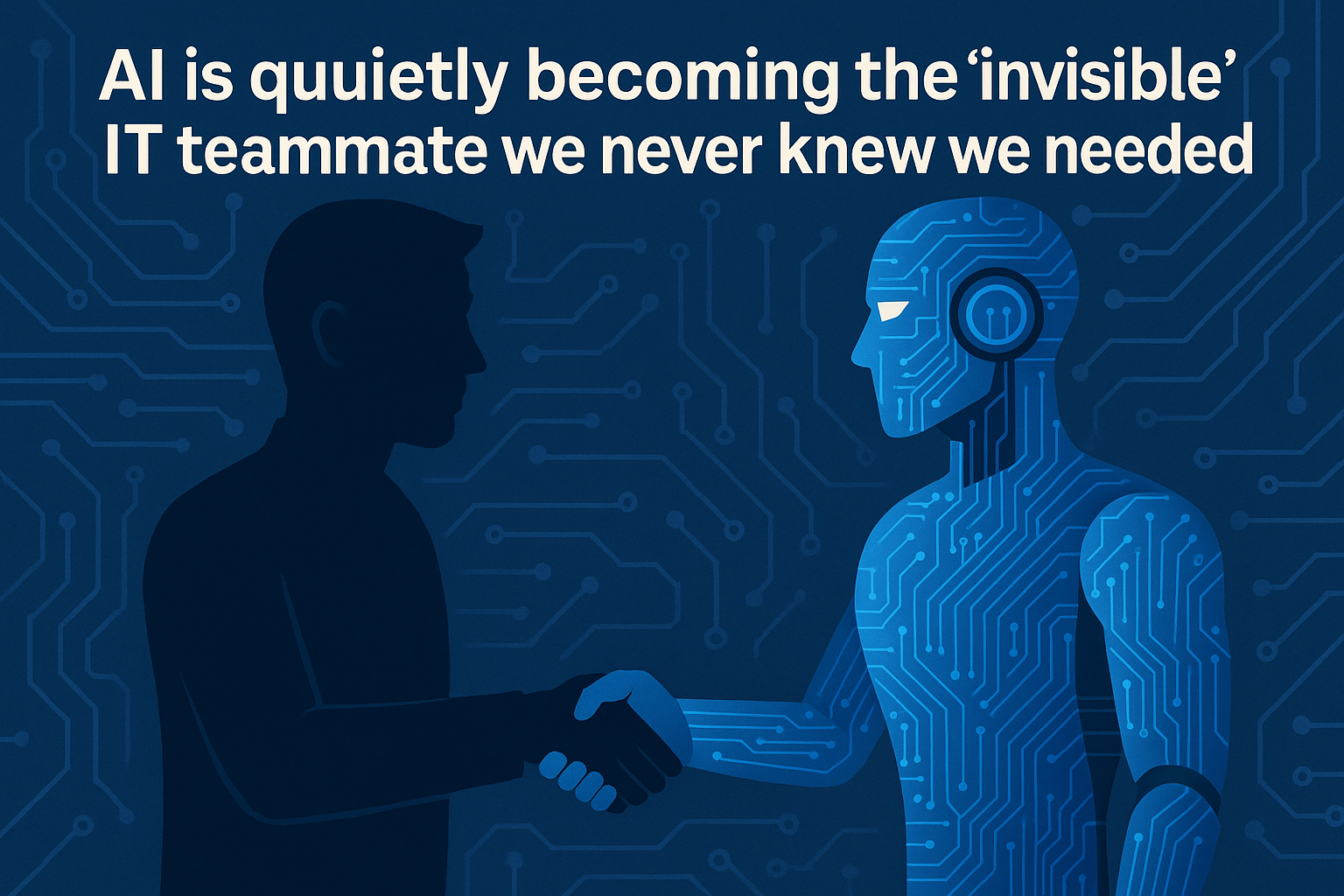Remember when “IT support” meant waiting on hold for 45 minutes only to be told to restart your computer? Those days are evaporating fast, thanks to Artificial Intelligence. In 2025, 84% of enterprises have either deployed or are actively piloting AI-driven IT services—and the numbers are increasing every quarter.
1. AI Is No Longer Optional—It’s Strategic
Global spending on AI-centric systems surpassed $154 billion in 2023. Why the splurge? Because CIOs have realized AI isn’t just a chatbot gimmick—it’s the fastest route to:
- Zero-downtime predictions
- 24/7 multilingual support
- Self-healing infrastructure
- Outcome-based cost models
“We’re moving from reactive break-fix to proactive no-break.”
— Global IT Operations Lead, Fortune 500 Retailer
2. 5 Killer Use-Cases You’ll See Everywhere in 2025
2.1 Conversational AI That Actually Understands Humans
Modern chatbots use NLP + sentiment analysis to detect if you’re frustrated and bump you to a human before you rage-tweet. They also:
- Auto-reset passwords
- Install approved apps
- Diagnose VPN hiccups
- Escalate with full context to Level-2 agents
2.2 Predictive Analytics: Break-Fix Is Dead
Machine-learning models chew through terabytes of logs nightly to spot the faint signal that a storage array will fail next Tuesday at 3 a.m.—so you can swap the drive on Monday during lunch.
| Metric | Before AI | After AI |
|---|---|---|
| Avg. Incident Detection Time | 4.2 hrs | 7 mins |
| Unplanned Downtime / Month | 9.6 hrs | 1.3 hrs |
2.3 Self-Healing ITSM Workflows
AI clusters similar tickets, identifies the root problem, and triggers an automated runbook—closing 30-40 % of repetitive incidents with zero human clicks.
2.4 Generative Knowledge Bases
Instead of technical writers drafting KB articles, GenAI drafts them from resolved tickets and auto-updates screenshots when UI changes. Result: 50 % fresher docs and 25 % fewer “how-to” tickets.
2.5 Zero-Touch Onboarding
New hire? AI pre-provisions laptops, grants app access, schedules orientation, and even pings Finance to add them to payroll—all before HR finishes the welcome handshake.
3. Hard ROI: What the Numbers Say
40 % faster ticket resolution
25 % reduction in agent workload
99.9 % uptime via predictive maintenance
4. Watch Outs: 5 Hurdles You Must Plan For
- Data Hygiene: AI is only as smart as the data you feed it—garbage in, garbage out.
- Legacy Integration: That 2008 ticketing system isn’t API-friendly; budget for middleware.
- Skill Gap: Upskill current staff or risk “shadow AI” projects popping up everywhere.
- Cost Overrun: Start with a pilot (one use-case, one team) before going org-wide.
- Compliance: GDPR, HIPAA, SOC-2—ensure your AI vendor’s data pipeline is airtight.
5. 2026 & Beyond: What’s Next?
5.1 Autonomous IT Operations (AIOps 3.0)
Imagine an infrastructure that re-patches itself, re-balances loads, and orders replacement hardware before you even notice an alert. Gartner predicts 60 % of large enterprises will run Level-4 autonomous IT by 2027.
5.2 Edge-AI Meets IoT
AI models running on edge gateways will process sensor data from smart factories in <10 ms, enabling real-time shutdowns during safety breaches—no cloud latency.
5.3 Outcome-Based IT Contracts
MSPs will move from per-device pricing to per-outcome: you pay only when AI keeps your ERP above 99.9 % availability for the entire quarter.
6. Quick-Start Checklist: 7 Steps to Pilot AI in IT Services
- Pick one high-volume, low-complexity use-case (e.g., password resets).
- Audit your data quality for the last 90 days.
- Select a vendor with ITIL-aligned AI (ServiceNow, Freshworks, Moveworks, etc.).
- Run a 4-week pilot with 50 users; track MTTR and user CSAT.
- Iterate weekly using feedback loops.
- Expand to Level-1 ticket triage if KPIs improve ≥20 %.
- Scale horizontally across other ITIL processes (change, problem, asset).
7. Bottom Line
Companies that treat AI as a bolt-on chatbot will fall behind. Those that weave AI into the very fabric of IT Service Management will enjoy faster resolutions, happier users, and a balance sheet that looks a lot healthier. The roadmap is clear—the only question is how fast you’ll move.
